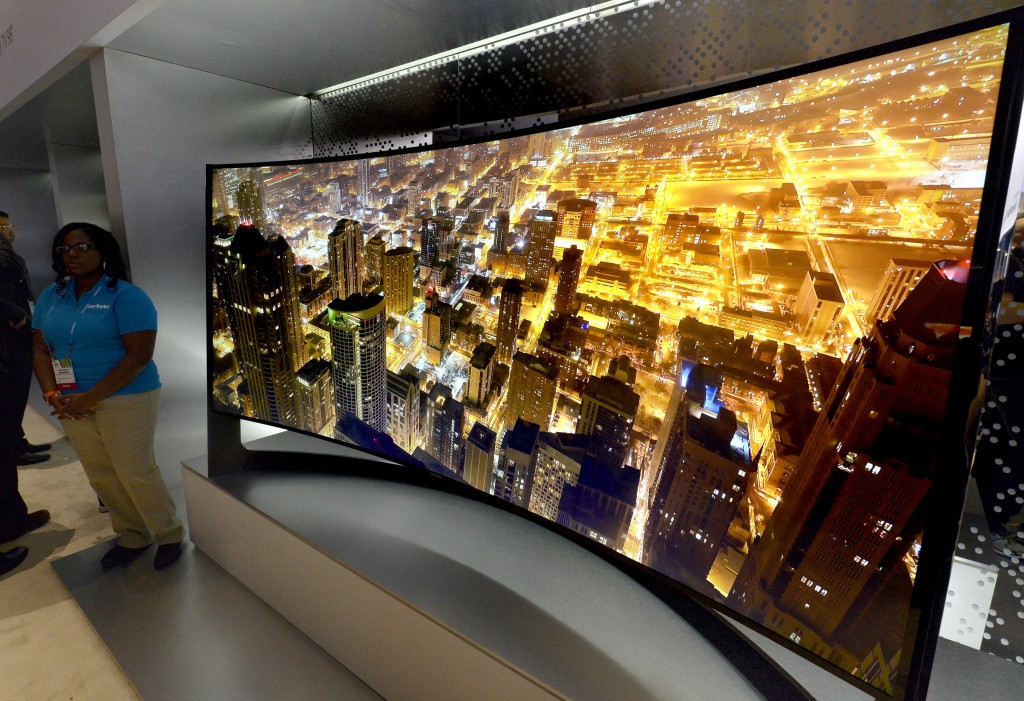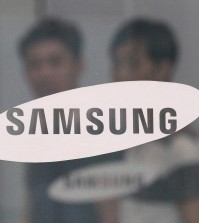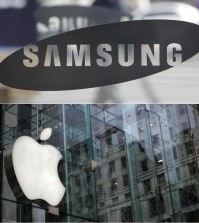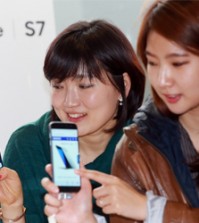- California Assembly OKs highest minimum wage in nation
- S. Korea unveils first graphic cigarette warnings
- US joins with South Korea, Japan in bid to deter North Korea
- LPGA golfer Chun In-gee finally back in action
- S. Korea won’t be top seed in final World Cup qualification round
- US men’s soccer misses 2nd straight Olympics
- US back on track in qualifying with 4-0 win over Guatemala
- High-intensity workout injuries spawn cottage industry
- CDC expands range of Zika mosquitoes into parts of Northeast
- Who knew? ‘The Walking Dead’ is helping families connect
Samsung·LG go “flexible” at Las Vegas show

Samsung Panoramic 105 inch Curved UHD TV is displayed at the Las Vegas Convention Center at the 2014 International CES (Consumer Electronics Show) in Las Vegas, Nevada.(yonhap)
 (Yonhap) South Korea’s tech giants kicked off a four-day battle at the International Consumer Electronics Show to prove their prowess in curved and bendable displays.
(Yonhap) South Korea’s tech giants kicked off a four-day battle at the International Consumer Electronics Show to prove their prowess in curved and bendable displays.
The CES, one of the world’s biggest technology fairs, kicked off in Las Vegas on Tuesday (local time) and will run through Friday. Around 3,200 technology firms are participating in the annual event that first opened in 1967.
South Korea’s Samsung Electronics Co. and LG Electronics Inc. joined the much-awaited event to promote their achievements and technological capabilities, with both adding “flexibility” to their models this year.
Samsung Electronics rolled out its 105-inch ultra-high definition (UHD) television that provides users with a new visual experience with a state-of-the-art resolution.
LG Electronics also introduced its curved UHD TV of the same size. Both firms adopted an aspect ratio of 21:9 for watching movies at home.
The two players have been battling on home turf to take the lead in the market for devices with curved screens, with Samsung Electronics getting a head start by releasing the Galaxy Round smartphone in October.
The most prominent feature of the latest Galaxy series phone is its curved display. It also features a 5.7-inch screen, the same as the Galaxy Note 3, with a 13-megapixel rear camera and 2.3 GHz quad-core processor.
The left-to-right curved plastic display makes the Galaxy Round slimmer and lighter than the Galaxy Note 3. It is 7.9 mm thick and weighs 154 grams.
LG Electronics also unveiled the G Flex in November, the latest in its smartphone line-up and its first smart device with a top-to-bottom curved display.
The G Flex has a 6-inch plastic OLED display that curves inward from top and bottom. It has proved a technological advancement from the Galaxy Round as it is equipped with a curved battery.
While competing neck-and-neck in the flexible display sector, Samsung announced Wednesday that its curved UHD TVs received certificates from global review organizations during the event.
Samsung said its curved UHD TVs received approval from Germany-based UV Rheinland Group and U.S.-based Underwriters Laboratories Inc. for their state-of-the-art resolutions as well as other technologies that met UDH standards.
It will mark the first time in the industry for an electronics manufacturer to win the title for curved displays.
The two South Korean tech giants also rolled out so-called bendable TV models at the CES, which is another technological advancement from curved displays, as users can manipulate angles with their remote control.
Samsung Electronics introduced its 85-inch bendable UHD LED TV ahead of the event, and its smaller rival LG Electronics also showcased its 77-inch UHD OLED TV model.
A handful of other innovative devices were also introduced at the CES, with Samsung Electronics launching four different tablet PC with improved resolutions, including the 12.2-inch Galaxy Note Pro.
LG Electronics also introduced its Lifeband Touch, a wearable device that tracks users’ physical activities and can connect to smartphones through its touch screen.
Meanwhile, Samsung’s heir apparent Lee Jay-yong, who had visited the CES every year since 2007, has no plan to visit the venue this year due to undisclosed scheduling conflicts.















